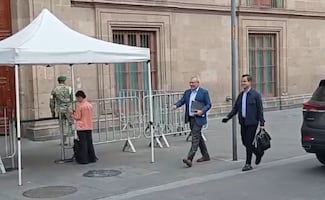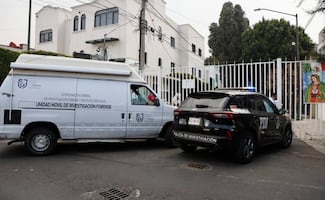Más Información

Senador del PT propone crear televisión, radio y periódico de la 4T; debemos hacer frente a medios de derecha, dice

César Duarte comparece ante jueza en penal del Altiplano; buscan vincularlo por presunto lavado de dinero

¿Qué es el Tratado de Aguas de 1944 entre México y EU por el que Trump amaga con imponer aranceles?; te explicamos

Gobernador de Michoacán se reúne con Sheinbaum en Palacio Nacional; acude también gabinete de Seguridad

Posponen en el Senado discusión y votación de reforma para crear la figura de “jueces sin rostro”; se discutirá en febrero

VIDEO Hallan a pareja sin vida en colonia Lindavista; una de las víctimas era abogado que litigó temas de despojos en Ecatepec
For more than 500 years , villancicos (a Spanish form of Christmas carols ) have been a part of western culture, evolving into songs that we hear every day on the radio during the winter season. However, these compositions have distanced themselves from their origins. At first, these carols were sung by villagers during the Middle Ages .
Subjects such as love, heroic feats, and field work inspired lyrics that paved the way for Catholicism.
According to music expert Aurelio Tello , Christmas carols continued a ceremonial tradition that was part of liturgical events in Europe . In Spanish America , however, their role was crucial in promoting Catholicism throughout the continent, which is why religious authorities sought to create a sense of communal identity by organizing festivities in vernacular languages such as Galician, Catalan, Castilian, and Biscayan .
Thus, every celebration had its own carol, and the Church had a whole professional team of musicians and composers, according to the National Institute of Anthropology and History (INAH) .
Drawing from this cultural activism, some of the greatest writers of the Baroque period , including Sor Juana Inés de la Cruz , wrote villancicos and tocotines , such as the “Villancicos to the Glorious Saint Peter Nolasco,” “The Most Glorious Prince of the Church,” “Villancicos of the Nativity,” and “Villancicos to the Birth of Our Lord Jesus Christ.”
“ Villancicos are a manifestation of an entire cosmogony and complex cultural tradition. It is an art that encompasses music, poetry, presentation and representation. The villancicos were as important to the Ibero American world as Opera was to Italy ,” Tello stated.
dm
Noticias según tus intereses
[Publicidad]
[Publicidad]









